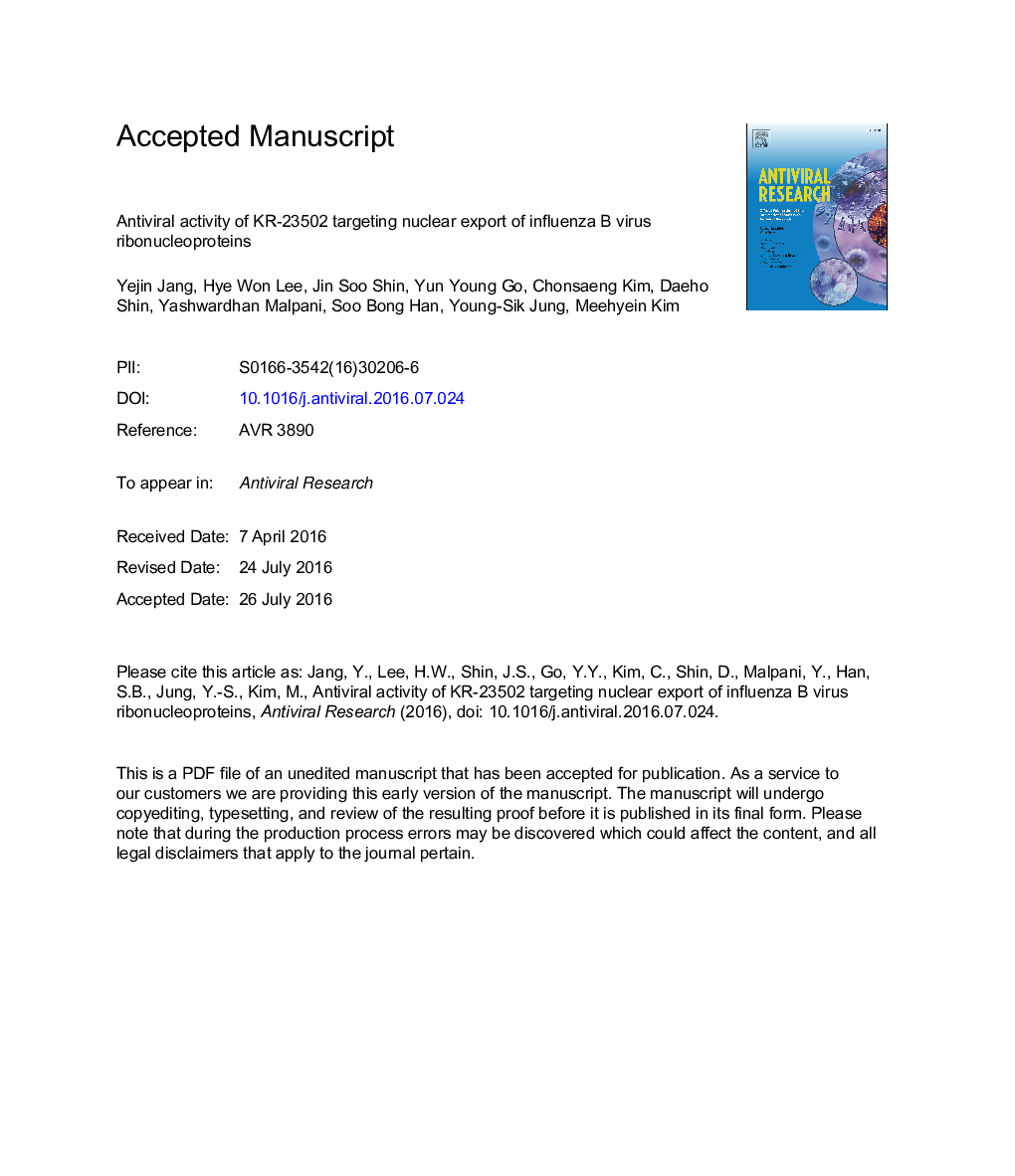| Article ID | Journal | Published Year | Pages | File Type |
|---|---|---|---|---|
| 5821551 | Antiviral Research | 2016 | 43 Pages |
Abstract
The spiro compound 5,6-dimethyl-3H,3â²H-spiro(benzofuran-2,1'-isobenzofuran)-3,3'-dione (KR-23502) has antiviral activity against influenza A and more potently B viruses. The aim of this study is to elucidate its mechanism of action. Subcellular localization and time-course expression of influenza B viral proteins, nucleoprotein (NP) and matrix protein 1 (M1), showed that KR-23502 reduced their amounts within 5Â h post-infection. Early steps of virus life cycle, including virus entry, nuclear localization of NP and viral RNA-dependent RNA replication, were not affected by KR-23502. Instead it interrupted a later event corresponding to nuclear export of NP and M1 proteins. Delivery of viral ribonucleoprotein (vRNP)-M1 complex has been known to be mediated by the viral nuclear export protein (NEP) through interaction with cellular chromosomal maintenance 1 (CRM1) protein. In this study, we experimentally demonstrated that the compound targets the nuclear export of vRNP. Moreover, a single mutation (aspartate to glycine) at amino acid position 54 in M1 [M1(D54G)] was detected after 18 passages in the presence of KR-23502 with a 2-fold increase in 50% effective concentration indicating that this compound has a relatively high genetic barrier to resistance. Interestingly, it was observed that proteasome-mediated degradation of M1(D54G) was attenuated by KR-23502. In conclusion, we suggest that KR-23502 shows its anti-influenza activity by downregulating NEP/CRM1-mediated nuclear export of influenza vRNP and M1. KR-23502 provides a core chemical skeleton for further structure-based design of novel antivirals against influenza viruses.
Related Topics
Life Sciences
Immunology and Microbiology
Virology
Authors
Yejin Jang, Hye Won Lee, Jin Soo Shin, Yun Young Go, Chonsaeng Kim, Daeho Shin, Yashwardhan Malpani, Soo Bong Han, Young-Sik Jung, Meehyein Kim,
